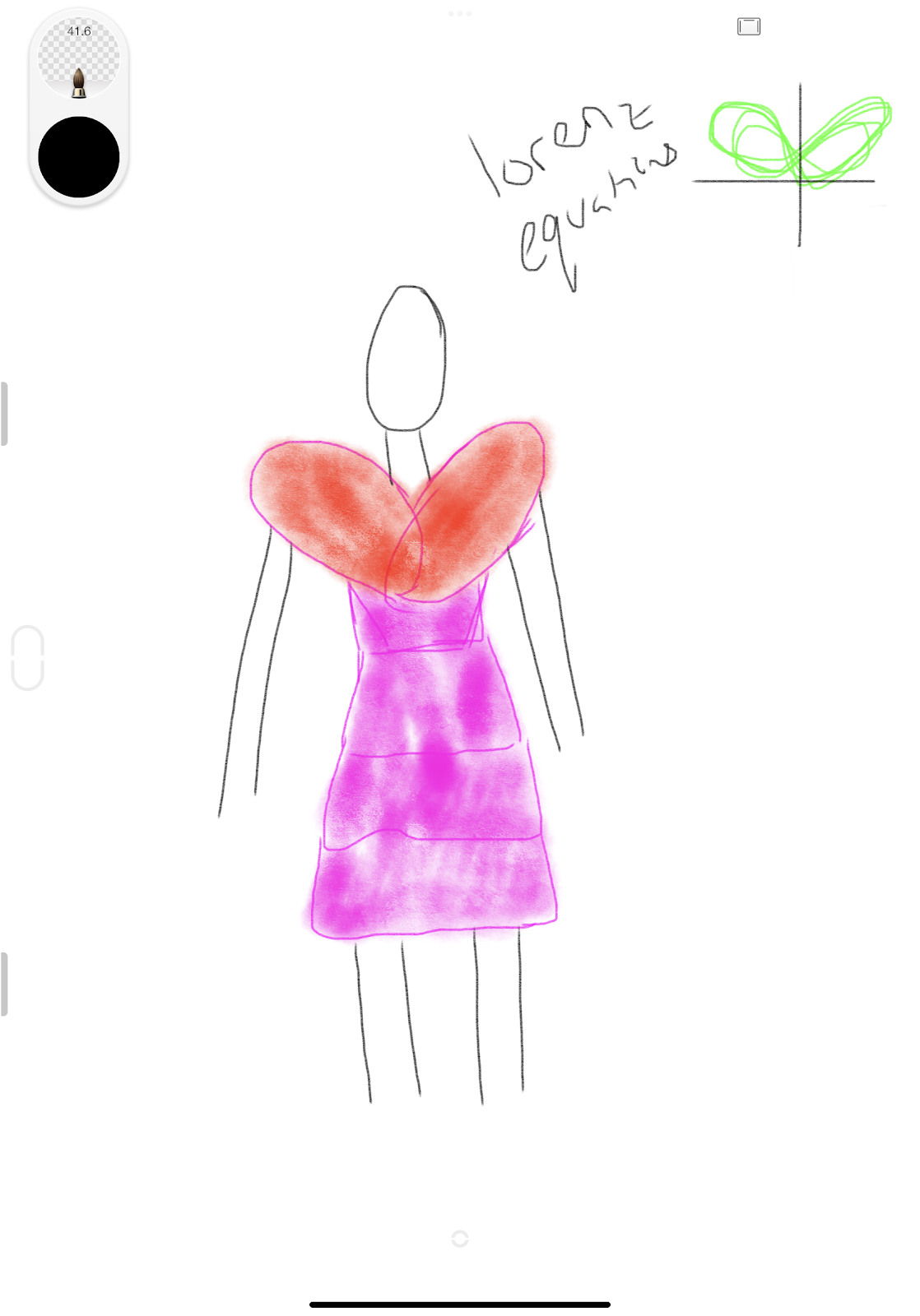Can the Lorenz Attractor inspire fashion?
Can chaos theory inspire fashion? In this week’s post I look at the Lorenz Attractor and see if we can use it to inspire fashion. I think everyone has a concept on what chaos is….confusion, no order, no rhyme or reason. If you think back to Jurassic Park, Jeff Goldblum’s character even talks about chaos theory but how would we use that to inspire clothes? Back in the 60’s a man named Edward Lorenz discovered that if you had a very specific set of initial conditions on a set of ordinary differential equations the plot was chaotic, never the same, and something that could never be predicted. Now you may have read that and just said to yourself what’s an ordinary differential equation and initial conditions and this seems like too much math and I just want to see the clothes. Understood!
Let’s use an analogy to help with it. Imagine a restaurant where there’s one meal and four chefs, each chef has a different background (French cuisine, Italian, Indian, and Mexican). The end goal is a roasted chicken breast with a vegetable and starch side, and depending on which chef that you have make you your meal you will get a slightly different dish based on their experience and eduction. The Italian chef may use garlic, oregano, basil with the chicken on pasta. The Indian chef may use turmeric, graham masala, garlic with the chicken served with rice and naan..each chef will start with the same baseline cook a chicken with vegetables and starch but will go there on way because of where they are initially. Since there are four chefs and they never operate on a consistent pattern you will never be able to predict which chef and meal you are going to receive. This is a way to view the differential equation as it is solving for a result (the final meal) and depending on the initial conditions the variable relationship will be different.
Going back to the Lorenz attractor, Lorenz said that with a specific set of initial conditions you would get a chaotic output for equations that were previously known to not do that. This provided a butterfly output that features multiple lines spiraling and looks similar to this:
So how does this inspire a dress? I wanted to do something with large puffy shoulders to represent the butterfly-esque plot. The rest I wanted to keep simple so just a short dress underneath. This is what my original idea was, just a large sleeve top and a simple bottom.
To construct this I watched multiple videos and decided it would be best to make the shoulders with a thick cotton material that had multiple pleats. For the dress itself I used a green suede that had a nice stretch so I didn’t have to worry about a zipper or closures on it. I added a couple darts to the front but other then that I kept it simple. The main part I wanted to focus on was the pleated Shaw. I love the color of the dress though as it reminds me of depression error glass.
Now that the dress was complete it was time to focus on the pleats! I got a yard of a navy batik material and I wanted to make this a no waste piece. I cut it in half so I had two pieces and then tried to get as many one inch pleats as I could on one side. Since the Lorenz attractor is chaotic I wanted one side slightly larger then the other so for the other side I made the pleats slightly larger. I also folded in both long edges so there wouldn’t be a raw edge with the pleats.
Once this was initially sewn up I realized the pleats started to fall out so I took a few more seams across them just to make sure the pleats could really be seen giving it that line look of the Lorenz attractor.
The last step was to sew both of these pieces together to create a tube that could then be draped over the shoulders. For the photos I added a broach to really call out that 1930’s style. I think all it’s maybe missing is a hat…but what do you think? Do you think we created a dress inspired by the Lorenz equations?
Watch the full video here!
Instagram: @sewemmydesigns
Facebook: Sew Emmy Designs
Want more information? Check out these sources:













Comments
Post a Comment